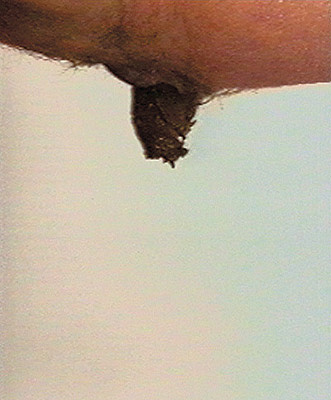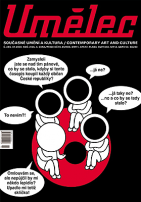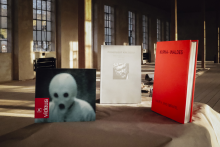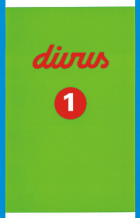"To Filip Turek
“The truly lewd people are the chaste ones.”
Joris-Karl Huysmans in his study Félicien Rops
I.
Not one human activity exists which is not reflected in one way or another by culture. Various periods having given birth to very heterogenous definitions or interpretations on the same topic. In this sense, the modern era also brings a different perception of history and begins to be engaged in themes that were not interesting and topical, or downright unacceptable and taboo in previous times. Desire for individual liberation now manifests itself in an openness that had been impossible.
Occurring in various ways in Europe throughout the 19th century, the crisis of allegorical imagery was an invitation to search for other ways and possibilities to respond to the surrounding world. The allegorical vision of the world was too closely linked to previous (especially baroque) periods (in the political, economic, and social sense), yet it also represented a certain continuity and tradition. The rate of change in civilization during the 19th and 20th centuries was, from the beginning, perceived negatively by some people as a threat to traditional, ethical and esthetic values.
Furthermore, modern art newly and actively began communicating with scientific knowledge. A number of theories in sociology, psychology (social psychology, personality psychology, etc.) opened up themes that had until this point in time (purposefully and unpurposefully) been ignored. Some artists became seriously engaged in the study of human psychic anatomy. Once again, since the Renaissance, a whole spectrum of new themes, visions and interpretations were revealed. Openness was also a part of the sexual sphere, and in the case of some artists, almost exclusively. Michel Foucault believed that the open presentation of sexuality was one of the key features of modern civilization. The allegorical imagery of love and sexuality slowly gave way to realistic (scientific) expression. The significance of this does not lie in the unobscured display of sex (which has had a long tradition in pornographic production) but in linking sexuality to the “nerve” world of individual existence.
Indeed, the erotic openness and explicitness of artwork made by some Asian and African cultures at first shocked Europe which soon became fascinated. These works, specifically graphic works and small sculptures, flooded the European continent from the middle of 19th century. What was so fascinating was the especially profound spiritual perception of sexuality. This period also witnessed a gradual shift in general understanding of sexuality that became the subject of various scientific disciplines. The first relations between human sexuality and the psyche were discovered, providing arguments for discussions about the moral decline (degeneration) of the modern world. Naturally, such themes started appearing in the visual arts, too. The previously taboo themes of the open presentation of sexuality are not only perceived as acceptable in modern times, they often become fashionable and inspiring.
II.
The buttocks, secretion and excrement are several examples of modern art themes which are directly connected with sexuality. This area, however, often goes beyond sexuality in many ways, and states the evidence of broader civilization, social and psychological themes. Excrement is one of the strongest taboos, a theme that “is better left unsaid in decent society.”1 In 1991, sculptor John Miller made an object entitled Dick/Jane. In this work, excrement forms a kind of pyramid-like plynth from which the head of a doll is protruding. The work allows for various interpretations, refering directly to psychoanalysis.2 Miller, however, worked with a number of social references: the anorectic ideal of beauty with dark skin and blond hair is “in shit up to your neck.” This was perceived very clearly especially in American culture during the period between the late 1980s and early 1990s.
By linking this theme to Satan and unclean forces, Christianity gave it the worst possible reputation. Various descriptions of the witch Sabbath correspond with kissing the Master’s ass and worshiping his excrement.3 In his description of the Sabbath, Stanislas de Guaita states that “instead of a bony goat’s ass, it is a young face of incredible beauty—and everybody is given a kiss of full and lively lips.”4 Satan is also depicted with a buttocks instead of a face. Excrement (more often animal excrement) also made up the ingredients of witch drinks and medicines. Sabbath itself was always connected with sexual orgies that went beyond human imagination. The anus as a symbol of Satan’s unclean and smelly mouth played an important part in this case. It was thanks to this connection (and still is to this day) that homosexuality was demonized. Any sexual activity that did not lead to actual human reproduction was considered unclean.
Robert Mapplethorp’s Selfportrait (1978) presents the artist as a Devil dressed in fetish clothes made of varnished leather. His right hand clutches a whip stuck into an anus. Its symbolism refers directly to the Devil’s tail, as well as to the “uncleanliness” of excrement. Mapplethorp’s identification with the Devil was influenced by his homosexuality. During the 1970s, American society became very polarized, and Mapplethorp’s work was still socially unacceptable at the end of the 1980s and the beginning of the 90s when his retrospective caused a lot of protest.5
The antique era found itself on the opposite pole, in this respect. Antique sculpture often portrayed Hermafroditos, son of the goddess Aphrodite and the gods’ messenger Hermes. Physically, Hermofroditos was half man and half woman; he was, however, always depicted as having a penis. Gerhard J. Bellinger saw an expression of the pederastic ideal in it “according to which coitus is always carried out anally, never with the vagina.”6 In the Antique period, anal coitus represented a relatively common and standard sexual activity, both homosexual and heterosexual (coitus in anum feminae). The bottocks even had its own goddess, Urania (Heavenly), or “the most beautiful of all,” sometimes also called Kallipygos (The One With A Beautiful Buttocks).
Such adoration of the buttocks was unacceptable in Christianity. Anal coitus was rejected for its “unnaturalness” and “obsenity.” Excrement was directly connected with the unclean and devilish forces of Evil. The universal character of this interpretation was strongly unifying, crossing the borders of one spiritual approach. That was the power of this taboo which was beyond imaginary confines (both esthetically and ethically). Man (an animal) is continually, throughout his life, confronted with his own uncleanliness—original sin—for which everything alive must be punished. It was not until scientific knowledge developed, especially in the evolution theories of Darwin and his successors, that the doors of the deconstruction of taboos opened up.
Before Darwin’s time, it was the French philosopher and writer, the Marquis de Sade, who “jeopardized” the esthetic and ethical horizons of Christian civilization. His libertarian philosophical concept stemmed from the liberation of individuality from artificially created morality, which was based on the fear of punishment as opposed to a voluntarily acceptance. The anal coitus theme is very frequent in de Sade’s texts, playing the role of differentiation (from nature). It is an expression of free decision and represents an installment of a different perception of the structure and meaning of existence which is in opposition to the current status. To the Marquis de Sade, violence is a natural human quality that has been unnaturally surpressed.7 This view, of course, opens up space for a variety of connections and references. The feeling of terror and dread as evoked by the Marquis de Sade’s writing can be found in staged photographs by Joel-Peter Witkin. His Arm Fuck (1982) shows the face of a man whose arm is inserted almost up to his shoulder into the anus of another man screaming with pain (delight). The theme’s perversity is surpressed by the manipulated sharpness and lighting of the scene. Sexuality is seen in close connection with death. This link is significant for a major portion of Witkin’s controversial work.
III.
Since the middle of the 19th century, medical science saw anal sexual activity as connected directly to fetishism and, later on, with masochism. A shift in understanding occurred at the end of the 80s when Richard von Krafft-Ebing published his scandalous book Psychopathia sexualis (1886). Not only did he create new terminology, he also described a number of non-standard sexual practices. The book attracted attention outside psychiatric and medical communities and also affected the art world. Only the theories on hysteria by Jean Martin Charcot and the book Entartung (Degeneration, 1893) by Max Nordau met with a comparably overwhelming response. Krafft-Ebing also contributed to the broader meaning of the word sadism. (He later came up with the term masochism as well.)
It was psychoanalysis, however, that made a real radical breakthrough, significantly contributing to the disruption of current taboos. Psychonalaysis began using a number of defined terms that were collectively denominated as anality. There is rather extensive literature available on this topic.8 In the “symbol of uncleanliness and dirt,” Freud sees a symbolic gift, the first precious thing that a child gives to its guardians.9 It was this unburdened relation of a child to its own sexuality and excrement that inspired Mike Kelly in his performance Nostalgic Depiction of the Innocence of Childhood (1990).
Bohuslav Brouk, an admirer of Freud and a member of the Prague surrealist group, noted anality in his book Psychoanalogic Sexology (1933). The chapter “Specialism” concerned taxonomy of the different sexual activities connected to anality. Brouk warned that they are carried out not only by “inferior individuals but also highly cultivated people.”10 He also stressed the connection with olfactory sensations. Some of the “olfactory specialists,” according to Brouk, include Charles Baudelair and Detlev von Liliencron. Earlier, Max Nordau also considered olfaction a sexual perversion, attacking Emile Zola and Joris-Karl Huysmans. Fin-de-siecle was fascinated by smells and searched for them. Smells aroused the fetish imagination, and the melancholy of “searching for lost times.” The same period saw discoveries of the first open portrayal of sexuality and excrement in the art of, for example, Alfred Kubin of Austria and James Ensor of Belgium. Decadence in particular became known for its interest in various perversions and aberrations that naturally caused protests arising from traditional cultural and social values. Decadent individualism, however, did not pay much attention to them, and a number of censorship interventions in moral issues followed. Poet Jiří Karásek ze Lvovic was even prosecuted because of his collection Sodomy (1895). The confiscation report reads that in his poems “he depicts perversion, debauchery between people of the same sex, i.e. lecherous activity severly offensive to decency and shame.” Also Oscar Wilde’s imprisonment for “sodomy” affected the atmosphere in the society of that time.11
IV.
The first steps had been taken and could not be reversed. Anality, however, has never become a frequent theme in modern art and has never thrown off the shadow of unacceptable taboo. Still, there are a number of examples that became part of very significant works of art. From James Joyce’s Ulysses that G. B. Shaw criticized for “excessive indulgence in cloaca,” to texts by Georges Bataille,12 Jean Genet and William Boroughs. The postmodern era abandoned all formal and content taboos with its relativism and eclecticism while new technology, computers and virtual communication once again opened up the issue of artificiality. Rather successful experiments with virtual sexuality have already been carried out. It was only a matter of time for excrement to insinuate itself into the net.13
Czech artist Jiří Černický has directly touched upon the artificiality of secretion from another angle. In an interview for the Živel magazine, he said of his diptych: “It is a play on fiction, the ideal of this society. Our society pursues its ideal of progress. But isn’t the idea of progress misquided? Is there anywhere to go at all? Aren’t we alreday there? This object shows that if some of the ideals of progress were fulfilled, we could look pretty funny. This is the ideal excrement.”14 The ideal excrement is reminiscent of snow-white toothpaste, just as the anus reminds us of a plastic cap. The installation by another Czech artist, Filip Turek, entitled What Happens With the Milka Chocolate, uses another symbol of consumption: the contrast between a commercially successful and popular product and the excrement into which chocolate was transformed by the body’s digestion. Chocolate itself is not just a delicacy for children, it is also a slight aphrodisiac.
It’s not possible to provide a detailed review of all works concerned with anality and secretion. The point is to draw attention to them and rid them, at least in part, off of a variously defined sacrosanctity. It is significant that Marcel Duchamp’s ready-made, Fountain (1915), is also connected with secretion. This fact certainly added to the “shock caused by the pissoir.” The point was not only the conceptual act but also the form. Piero Manzoni’s object Merda d’artista (1961) suggested the possible connection of Duchamp with postmodernism. The fact that excrement is sealed in a can represents a relatively conservative approach to taboo intimacy. The author’s own indentification with the contents of the can, however, goes far beyond Duchamp’s distancing from his work. The goddess of physical love and beauty, Aphrodite, was born off the sperm foam from the severed phallus of Uranus. And one of the most crucial chapters of modern art history was born off a pissoir.
Translated by Vladan Šír
Notes:
1. This contradiction is represented by the frequent use of words connected with the buttocks and secretion in everyday communication. Of course, there are differences, often depending on traditon, social status and education. Popular culture and humor are in their tabloid form often based and dependent on these themes.
2. Hal Foster, The Return of the Real. Cambridge, London 1996, p. 161.
3. A remarkable description of Sabbath appears in the book Angel of Fire by Valery Bryusov, Prague 1998.
4. Stanislas de Guaita, The Snake of Genesis: Satan’s Temple (Le serpent de la Genese: Le temple de Satan), Prague 1996, p. 75
5. Steven C. Dubin, Arresting Images. Politic Art and Uncivil Actions. New York 1992, pp. 170-192.
6. Gerhard J. Bellinger, Sexuality In Religions of the World, Prague 1998, p. 82.
7. Georges Bataille, The Use Value of D. A. F. de Sade. in: Visions of Excess. Selected Writings, 1927–1939. Minneapolis 1994, pp. 91-102.
8. K. Abraham, A Short Study of the Development of Libido, Viewed In the Light of Mental Disorders. in: Selected Papers. New York 1953, pp. 418-501, the study was written in 1924. S. Freud, Character And Anal Erotism. in: Standard Edition of the Complete Psychological Works of Sigmund Freud 9. London 1953–74, pp. 167–175, the study was written in 1908. P. Heiman, Notes On the Anal Stage. International Journal of Psychoanalysis. London 1948. W. Menninger, Characteristic and Symptomatic Expressions Related to the Anal Phase of Psychosexual Development. Psychonalaytic Quarterly 12, 1943, pp. 161 – 193.
9. Excrement as a value has its equivalent in the traditional and popular interpretation of dreams where excrement is an attribute of wealth, i.e. gold and money.
10. Bohuslav Brouk, Human Soul and Sex. Prague 1992, pp. 118-119.
11 Vernon A. Rosario, The Erotic Imagination. French Histories of Perversity. New York, Oxford 1997.
12. Georges Bataille, The Solar Anus (1927) or The Lugubrious Game. Both texts in: Visions of Excess. Selected Writings, 1927–1939. Minneapolis 1994.
13. Searching through the internet, you will first come across a clutter of links to a special porn website. Fewer in number but relatively frequent are websites offering various jokes and “humorous” bits of wisdoms. Searching for these websites, it is useful to use the word shit. The author of these notes, however, did not come across much that would be of use.
14. Jiří Černický, the Aspects of Immortality, Živel iss. 12, 1999, p. 34.
"









































 We Are Rising National Gallery For You! Go to Kyjov by Krásná Lípa no.37.
We Are Rising National Gallery For You! Go to Kyjov by Krásná Lípa no.37.
Comentarios
Actualmente no hay comentariosAgregar nuevo comentario